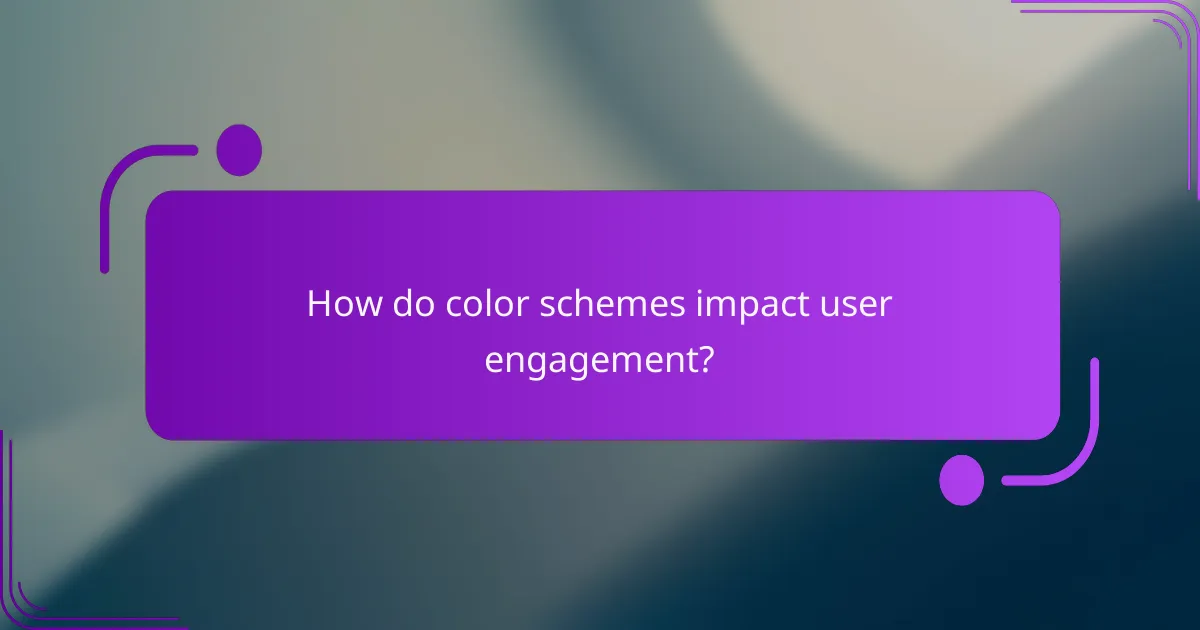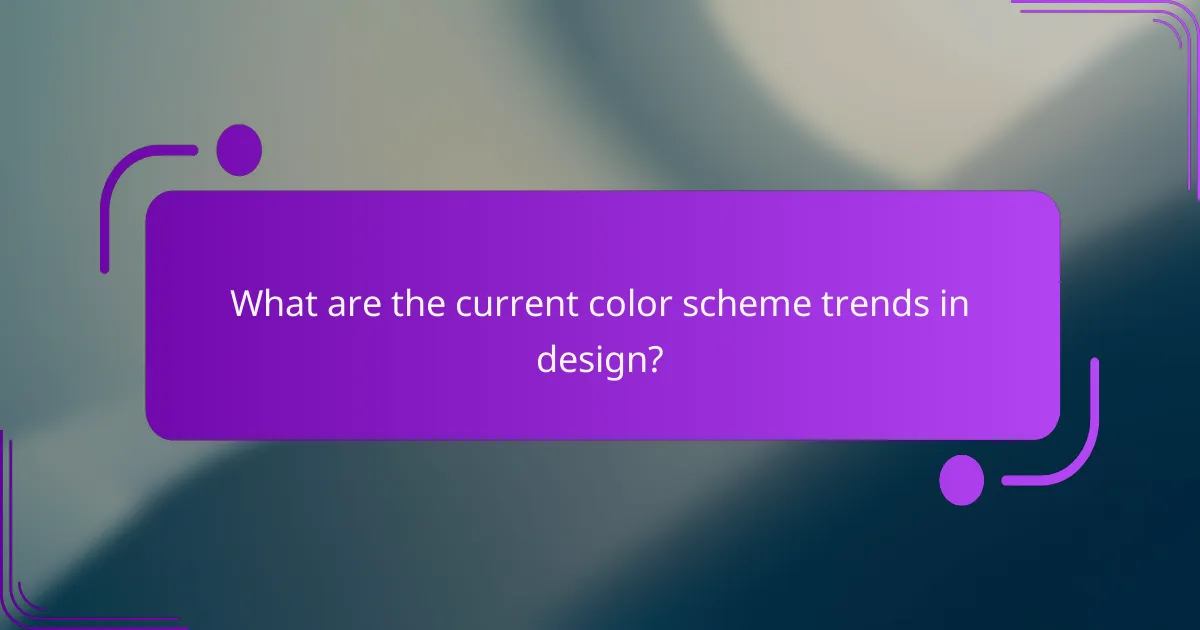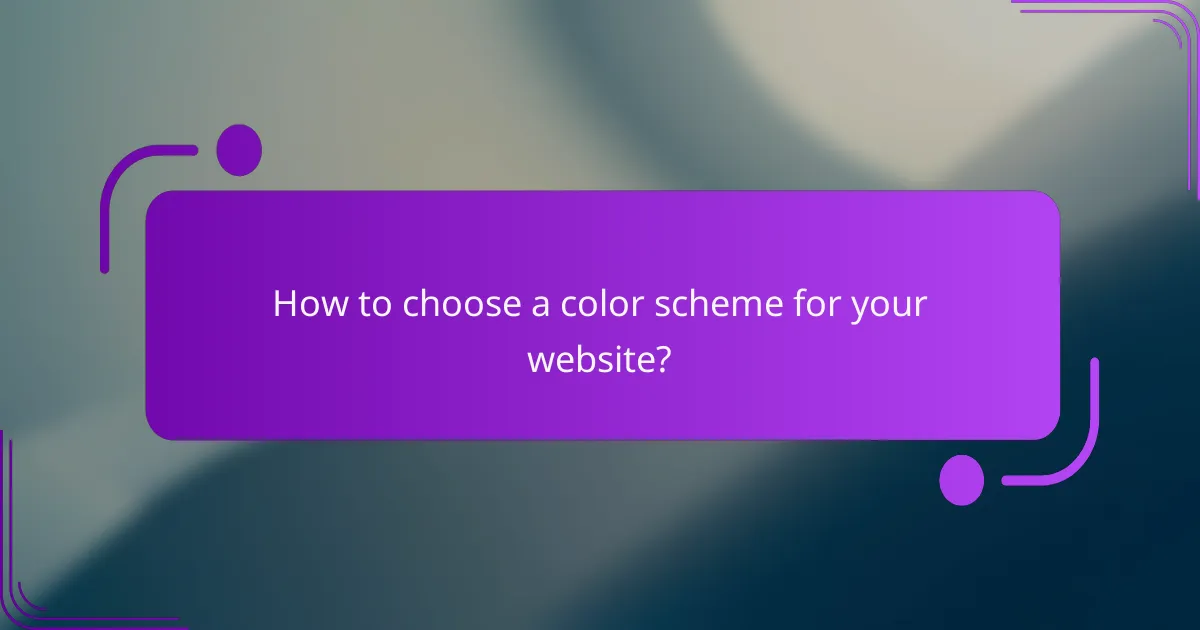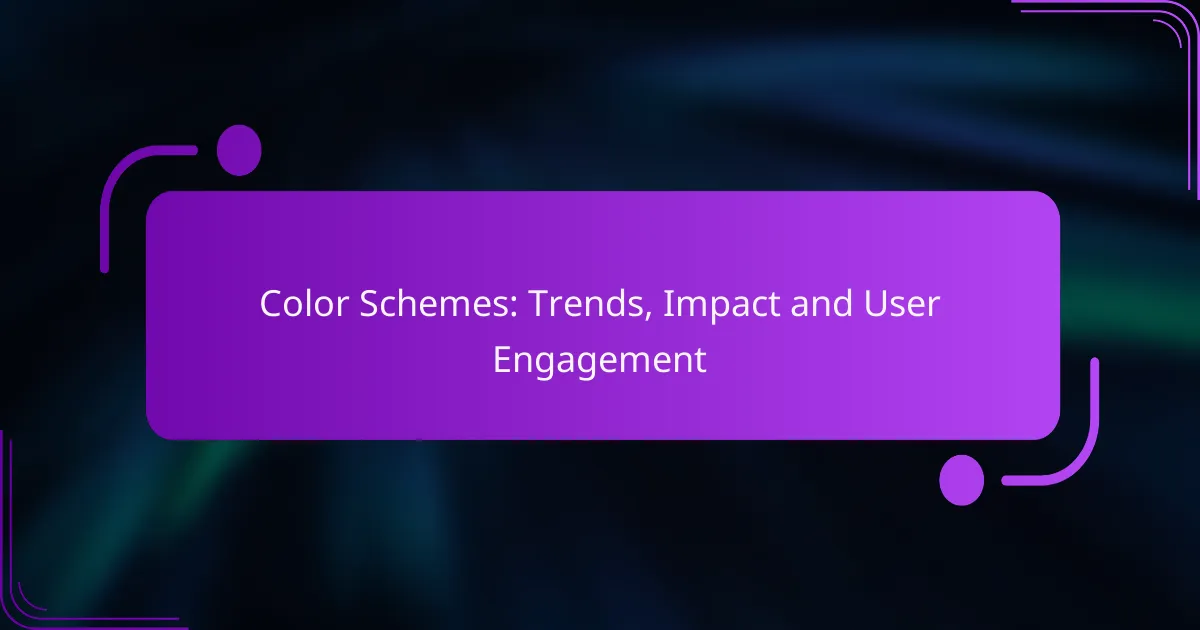Color schemes play a pivotal role in shaping user engagement by influencing perceptions and interactions on a website. By carefully selecting a color palette, designers can enhance readability, evoke emotions, and strengthen brand recognition, ultimately fostering user interest and encouraging desired actions.

How do color schemes impact user engagement?
Color schemes significantly influence user engagement by affecting how users perceive and interact with a website. A well-chosen color palette can enhance readability, evoke emotional responses, and strengthen brand recognition, all of which are crucial for maintaining user interest and encouraging action.
Increased readability
Effective color schemes improve readability by ensuring sufficient contrast between text and background colors. High contrast, such as dark text on a light background, makes content easier to read, especially for users with visual impairments. Aim for a contrast ratio of at least 4.5:1 for body text to enhance accessibility.
Consider using color combinations that are familiar and comfortable for users. For example, blue and white or black and yellow are commonly accepted as easy-to-read pairings. Avoid overly bright colors that can strain the eyes and lead to quick user fatigue.
Emotional response
Colors evoke specific emotions and can significantly impact user behavior. For instance, blue often conveys trust and security, making it a popular choice for financial websites, while red can create a sense of urgency, ideal for sales promotions. Understanding color psychology can help tailor your site’s color scheme to elicit the desired emotional response from users.
When designing a color scheme, consider your target audience and the emotions you want to evoke. For example, a health-related site might benefit from calming greens and blues, while a creative portfolio might use vibrant colors to inspire excitement and creativity.
Brand recognition
A consistent color scheme reinforces brand identity and enhances recognition. Companies like Coca-Cola and McDonald’s effectively use specific colors that are instantly associated with their brands. By maintaining a uniform color palette across all platforms, businesses can create a cohesive brand image that users easily remember.
When selecting colors for branding, choose shades that reflect your brand’s personality and values. Test your color choices with your audience to ensure they resonate well and align with your brand message. Consistency is key; use the same colors in your logo, website, and marketing materials to build a strong visual identity.

What are the current color scheme trends in design?
Current color scheme trends in design focus on creating engaging user experiences through strategic color choices. Designers are increasingly using palettes that evoke emotions, enhance usability, and align with brand identities.
Pastel colors
Pastel colors are soft, muted shades that create a calming and inviting atmosphere. They are often used in web and graphic design to convey a sense of warmth and approachability, making them popular for brands targeting a younger audience or those in the wellness sector.
When implementing pastel colors, consider using them as backgrounds or accents to maintain balance. A common approach is to pair pastels with neutral tones to avoid overwhelming users. For example, a soft pink background with white text can create a pleasant reading experience.
Dark mode
Dark mode is a color scheme that uses light text on a dark background, reducing eye strain and improving readability in low-light environments. This trend has gained traction due to its aesthetic appeal and energy-saving benefits on OLED screens.
When designing for dark mode, ensure sufficient contrast between text and background colors to maintain legibility. A good rule of thumb is to use a contrast ratio of at least 4.5:1 for normal text. Popular applications like Twitter and YouTube have successfully integrated dark mode, enhancing user engagement.
Bold contrasts
Bold contrasts involve using striking color combinations to draw attention and create visual interest. This trend is effective in guiding users’ focus towards key elements, such as calls to action or important information.
To effectively utilize bold contrasts, select complementary colors that enhance each other without clashing. For instance, pairing a vibrant orange with a deep blue can create an eye-catching design. However, be cautious not to overuse bold contrasts, as they can lead to visual fatigue if applied excessively.

How to choose a color scheme for your website?
Selecting a color scheme for your website involves understanding your brand identity, audience preferences, and industry standards. A well-chosen palette can enhance user engagement and convey your message effectively.
Understand your audience
Knowing your audience is crucial when choosing a color scheme. Different demographics respond to colors in unique ways; for instance, younger audiences may prefer vibrant colors, while older users might favor muted tones. Conduct surveys or analyze user behavior to identify color preferences.
Consider cultural implications as well. Colors can have different meanings across cultures, so ensure your choices resonate positively with your target market. For example, red can symbolize luck in some cultures but signify danger in others.
Analyze competitors
Reviewing competitors can provide insights into effective color schemes within your industry. Identify the dominant colors used by successful competitors and consider how they align with their brand messaging. This can help you find a balance between standing out and fitting in.
While it’s important to differentiate your website, avoid colors that clash with industry norms unless you have a strong branding strategy. For example, tech companies often use blue for trustworthiness, while creative agencies might opt for bolder, more eclectic palettes.
Use color psychology
Color psychology plays a significant role in how users perceive your website. Colors can evoke emotions and influence behavior; for instance, blue often conveys trust, while yellow can evoke feelings of happiness. Choose colors that align with the emotions you want to evoke in your audience.
When selecting colors, consider using a color wheel to find complementary shades that work well together. A harmonious palette can create a visually appealing experience that encourages user engagement. Aim for a balance of warm and cool tones to maintain interest without overwhelming visitors.

What tools can help in selecting color schemes?
Several tools can assist in selecting effective color schemes, each offering unique features and functionalities. These tools help designers and marketers create visually appealing palettes that enhance user engagement and brand identity.
Adobe Color
Adobe Color is a versatile tool that allows users to create and explore color schemes based on color theory principles. Users can generate palettes using various color rules such as complementary, analogous, or triadic, and can also extract colors from images.
One key feature is the ability to save and share color themes within the Adobe Creative Cloud ecosystem, making it easy to integrate into design projects. Consider using Adobe Color for professional-grade palettes that align with established design standards.
Coolors
Coolors is a user-friendly color scheme generator that enables users to create, save, and share color palettes quickly. By simply pressing the spacebar, users can cycle through random color combinations until they find a suitable match.
This tool also allows for adjustments to hue, saturation, and brightness, providing flexibility in fine-tuning palettes. Coolors is ideal for both beginners and experienced designers looking for inspiration or quick solutions.
Canva Color Palette Generator
The Canva Color Palette Generator is a straightforward tool that helps users create color schemes from images. By uploading a photo, users can extract prominent colors, which can be useful for maintaining brand consistency or creating visually cohesive designs.
Additionally, Canva offers pre-made color palettes and suggestions based on current design trends. This tool is particularly beneficial for those who want to create engaging visuals without extensive design knowledge.

What are the benefits of using color schemes in marketing?
Using color schemes in marketing offers several advantages, including enhanced visual appeal, improved conversion rates, and consistent branding. These benefits help businesses attract customers, convey messages effectively, and create a recognizable identity.
Enhanced visual appeal
Color schemes significantly enhance the visual appeal of marketing materials, making them more attractive to potential customers. A well-chosen palette can evoke emotions and draw attention, which is crucial in crowded markets. For example, vibrant colors can energize a brand, while softer tones may convey calmness and reliability.
When selecting colors, consider the target audience and the psychological effects of different hues. Tools like Adobe Color can help create harmonious palettes that resonate with your brand’s message.
Improved conversion rates
Effective color schemes can lead to improved conversion rates by guiding user behavior and influencing decisions. Research suggests that certain colors can increase conversion rates by up to 20% when used strategically in calls to action and key elements on a webpage.
For instance, using contrasting colors for buttons can make them stand out, prompting users to click. Testing different color combinations through A/B testing can help determine which schemes yield the best results for your specific audience.
Consistent branding
Consistency in color schemes is vital for establishing a strong brand identity. A unified color palette across all marketing channels reinforces brand recognition and builds trust with consumers. Brands like Coca-Cola and Tiffany & Co. are prime examples of how consistent color usage contributes to instant recognition.
To maintain consistent branding, create a style guide that outlines your color palette, including primary and secondary colors, and ensure all marketing materials adhere to these guidelines. This approach helps create a cohesive image that resonates with customers across various platforms.

What are common mistakes in color scheme selection?
Common mistakes in color scheme selection include using overly complex palettes, ignoring accessibility standards, and applying colors inconsistently across platforms. These errors can lead to poor user engagement and hinder the overall effectiveness of a design.
Overly complex palettes
Using overly complex color palettes can confuse users and dilute the brand message. A good rule of thumb is to limit the palette to three to five primary colors, ensuring they complement each other and serve a clear purpose.
For example, a website might use one color for backgrounds, another for headings, and a third for call-to-action buttons. This simplicity helps users navigate and understand the content without distraction.
Ignoring accessibility
Ignoring accessibility in color scheme selection can alienate users with visual impairments. It’s crucial to ensure sufficient contrast between text and background colors, following guidelines such as the Web Content Accessibility Guidelines (WCAG).
A practical approach is to use online contrast checkers to verify that your color choices meet the recommended contrast ratios. Aim for a contrast ratio of at least 4.5:1 for normal text to enhance readability.
Inconsistent application
Inconsistent application of color schemes can create confusion and weaken brand identity. Consistency helps users form a mental model of how to interact with your content, enhancing their experience.
To maintain consistency, create a style guide that outlines color usage for different elements, such as buttons, links, and backgrounds. This guide should be referenced by all team members involved in design and content creation.
